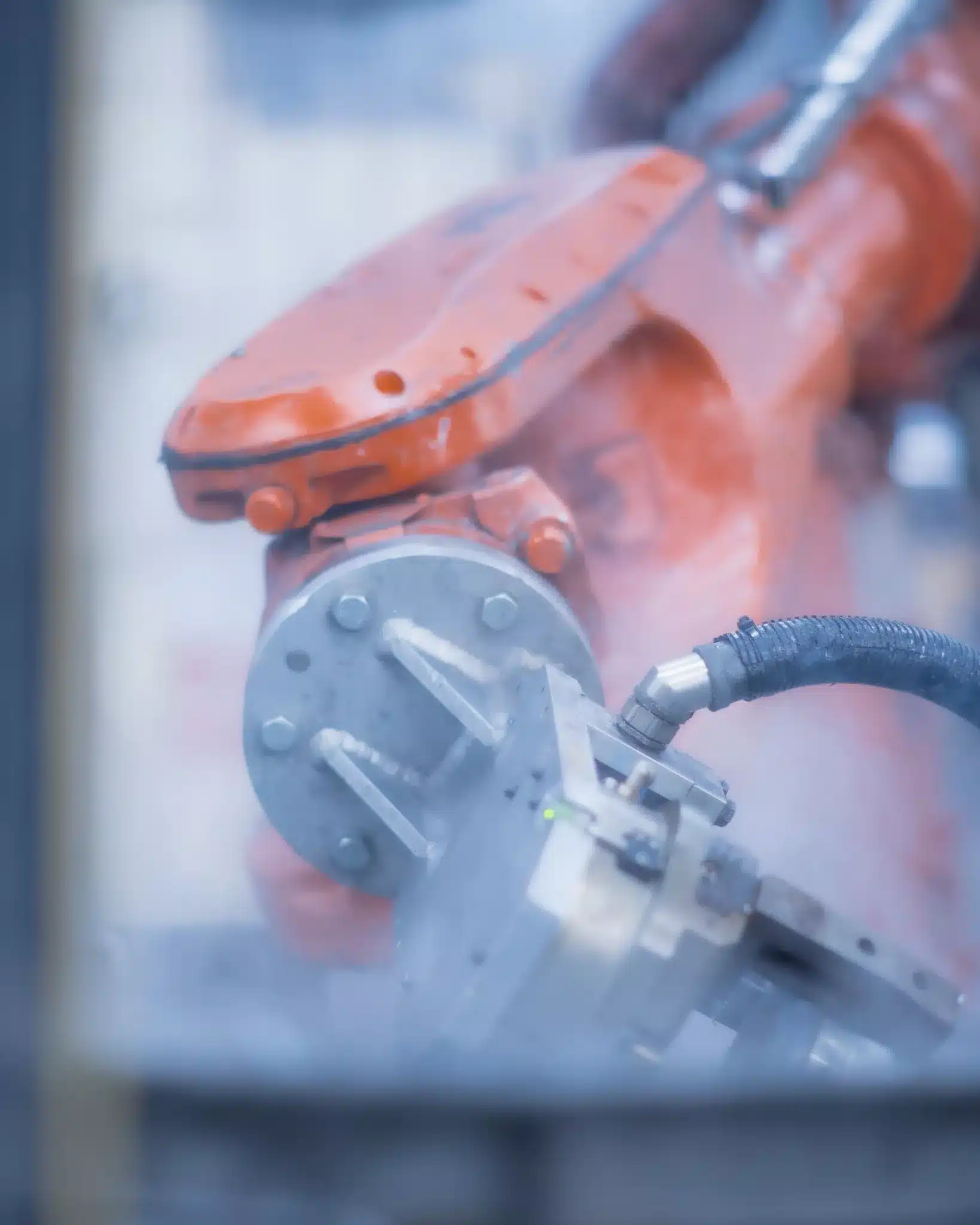Quench Tanks in Die Casting
In die casting, managing heat effectively is a crucial part of the production process. An often-overlooked part of our fully automated cell is the quench tank. Quench tanks are used immediately after a component has been cast. Our extract robots take the part from the die, and then cool them in a quench tank, before taking them over to the trimming tool.
Historically, these quench tanks were outsourced from external suppliers. However, for our most recent die casting cell, our skilled process engineering team needed to build one from scratch. This is just another capability we have been to bring in-house as the manufacturing landscape of the UK changes.
Building a Quench Tank
Temperature regulation is obviously an important part of the quench tank, and for this we used heat exchangers supplied by Bowman. These work to maintain the water in the quench tank at a constant temperature. Notably, the system only cools the water as necessary, as the water is being constantly recirculated around the tank. This setup minimises the energy being used, while maintaining the optimal conditions for cooling the parts. We control and monitor the quench tanks via a bespoke control panel that again, was designed and built in-house.
As we’ll discuss, the system plays a key role in the consistent quality of our castings. This means we have to schedule rigorous preventative maintenance to keep the system performing at its best. For various aspects of the quench tank we have daily, weekly, and quarterly maintenance schedules to ensure the quenching process is repeatable and reliable.
As we’ll discuss, the system plays a key role in the consistent quality of our castings. This means we have to schedule rigorous preventative maintenance to keep the system performing at its best. For various aspects of the quench tank we have daily, weekly, and quarterly maintenance schedules to ensure the quenching process is repeatable and reliable.

An Extract Robot Putting a Die Cast Part into a Quench Tank
How Quench Tanks Help Die Casting
When a casting is ejected from the die casting machine, the temperature of the nominal wall sections are over 250°C. The process of quenching the casting rapidly reduces the temperature to a more manageable 45°C. This quick cooling is important for a couple of reasons:
Firstly, cooling the casting stabilises it for the process of trimming. Without the quenching process, the casting would be prone to a range of dimensional and visual defects. The controlled cooling process enables us to meet the precise material and dimensional requirements of our customers.
Secondly, from a health and safety perspective, it’s important to remember that the casting is delivered to the operator immediately after being trimmed! Bringing the surface temperature right down means that it is safe for them to handle and pack.
Our automated quench tank process is also designed to monitor the temperature of the parts themselves. This means that quenching only takes as long as it needs to. This saves energy on every cycle of the cell and improves the overall efficiency of the process.
On our squeeze die casting machines, the quenching process is especially important. One of the main reasons for the squeeze cast process is that it results in parts that can be heat treated and welded. On the cell, the quench tank functions like an initial mini heat treatment process. Here, speed is of the essence—it’s all about introducing the casting into the tank at its peak temperature, then cooling it down as swiftly as possible.
Every step of the die casting process has been honed and refined over the years. Here at CastAlum, we’re always innovating, and the adaptations we have developed in-house for the quench tank process stand as yet another testament to our commitment to quality, safety, and efficiency.
Follow Us Online
Remember to follow us on LinkedIn to learn more about our technological expertise and engineering solutions!
You can also sign up to our monthly newsletter: ‘The CastAlum Compendium‘ to receive our updates regularly.
Get in touch to find out more about our die casting and machining services!
Got questions about our services or would like us to quote?
Simply fill out the form below and a member of our team will be in touch!

